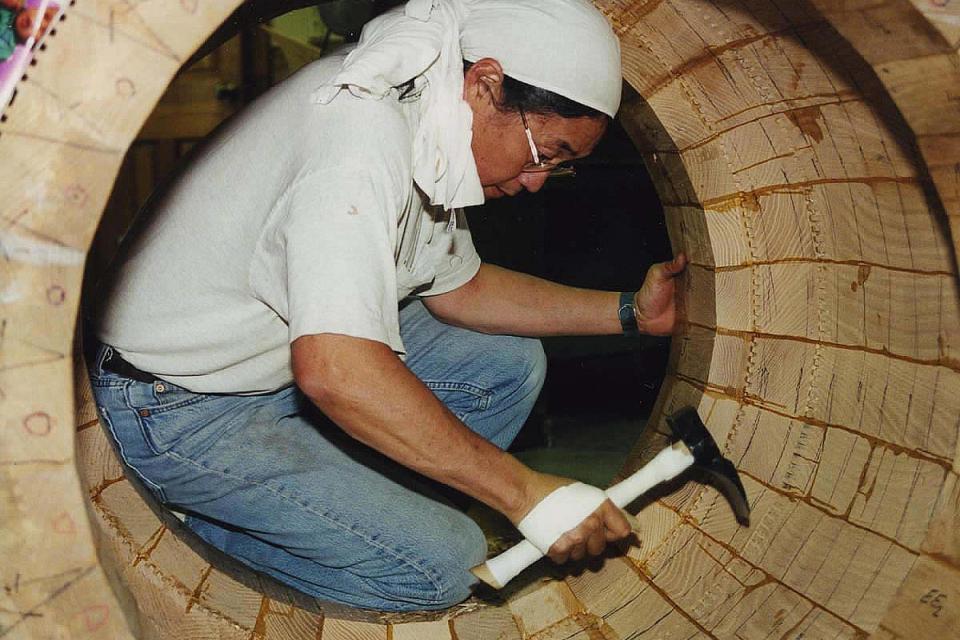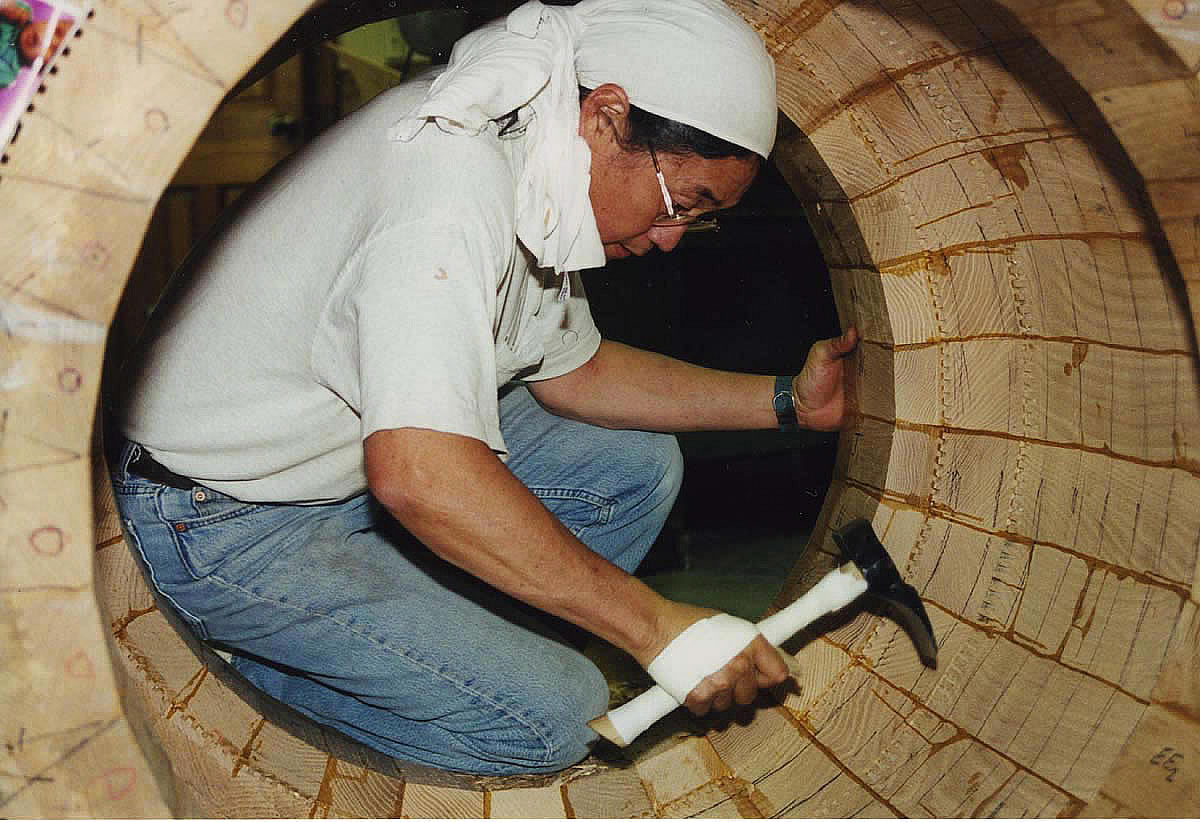
Big Drum Articles—All in the Drum
All in the Drum: Building Taiko in America
By Sojin Kim, Ph.D.
There’s a whole universe inside this drum.
—Mark Miyoshi, taiko maker, Mt. Shasta, California
Mark Miyoshi is the first and most renowned professional taiko maker in the United States, and his clientele is international in scope. His endeavors and achievements are closely tied to the development of taiko drumming in this country—a movement that has emerged not through the actions or visions of any one individual, but through the collaborations among many. Significantly, it was the development of a particularly American approach to taiko making—also a collective effort—that made possible the spread of taiko throughout the United States and Canada.

The earliest American groups, which formed the late 1960s and 1970s, started from scratch and with very little resources. Many initially used the old drums that had been stashed away at local Buddhist temples. Other accessories were fashioned from cheap, available materials: metal ashtrays were given new life as cymbals, hammer handles were adapted for drumsticks, and chairs were used as drum stands. Johnny Mori of Kinnara Taiko describes the challenges these early groups confronted: “It was new. There was nothing like it around. And there was no teacher. We were just making it up as we were going along. Not only were we making up the music, we were also making the instruments because we couldn’t afford our own taiko from Japan.”
The most common drum used by groups is the long-bodied chu-daiko; in Japan, these are carved from solid blocks of wood and cost upwards of a thousand dollars, a price out of reach for the fledgling American groups. Unthwarted, these taiko players devised affordable and ingenious methods for building their own drums. This process continues to distinguish them from Japanese groups, who do not make their own drums; in Japan, the building of taiko is a centuries-old profession perpetuated by master craftsmen.
In the late 1960s, Reverend Masao Kodani of Los Angeles’s Kinnara Taiko pioneered the reuse of old barrels as drums: at first nail kegs were used, and then later the now standard oak wine barrel. George Abe, another early member of Kinnara Taiko, asserts, “I don’t think the wine barrel taiko would have ever been invented in Japan. They have a definition that is set. We have a definition, but we’re also a lot looser about it.” This act essentially revolutionized contemporary taiko drumming–it enabled groups to build their own instruments for a few hundred dollars, and it made taiko drumming accessible to a wider range of participants.
Grandmaster Seiichi Tanaka of San Francisco Taiko introduced American taiko players to the use of hydraulic car jacks to stretch the drumhead skins tightly across the drum bodies. Stanley Morgan of Norwalk Taiko developed a means for disassembling barrels and regluing them without their original metal bands. In the 1970s experienced members of Kinnara Taiko traveled to other Buddhist temples to provide drum-making assistance to others. Henry Nakata of San Jose Taiko compiled instructions and diagrams that continue to circulate literally around the world; these instructions were the basis of Mark Miyoshi’s early drum-making efforts when he was playing with Denver Taiko in the late-1970s.
Groups developed and refined their drum-making techniques through trial and error as well as through the instruction of more experienced builders. Joyce Nakata Kim recalls the difficulty and satisfaction of Denver Taiko’s early attempts: “We broke the two-by-fours. Car jacks were busting. We were bending tacks. We were smashing fingers. And it was all uneven. But we actually finished it.” Mark Miyoshi suggests, “I think people are a lot closer to the drum when they make it. They understand how difficult it is. They understand all the materials that go into it. I think that’s a great thing about American taiko.”
In making their own drums, American taiko players have developed a new, meaningful, and affordable way to make music. Furthermore, through their collective efforts and creative collaborations, they foster and reinforce a sense of community among people representing different regions, generations, cultures, and nationalities.
This interview was conducted in conjunction with the Big Drum: Taiko in the United States exhibition in 2005.
